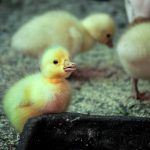Ducks are a diverse group of waterfowl that come in a wide variety of breeds, each with its own unique characteristics and traits. Understanding the different duck breeds is essential for anyone interested in raising ducks for eggs, meat, or simply as pets. Duck breeds can be categorized into different groups based on their primary use, such as meat production, egg laying, or ornamental purposes. Additionally, ducks can also be classified based on their size, color, and other physical attributes.
When it comes to understanding duck breeds, it’s important to consider their individual needs and requirements. Some breeds are better suited for free-ranging on ponds and lakes, while others thrive in a more confined space. Additionally, certain breeds are known for their calm and friendly temperament, making them ideal for families with children. Understanding the specific characteristics of each duck breed can help you make an informed decision when choosing the right breed for your needs.
Table of Contents
Key Takeaways
- Understanding Duck Breeds: An Overview
- Popular Duck Breeds and Their Characteristics
- Rare and Unique Duck Breeds to Explore
- Duck Breed Images: A Visual Guide
- Choosing the Right Duck Breed for Your Needs
- Tips for Caring for Different Duck Breeds
- Resources for Finding and Learning More About Duck Breeds
Popular Duck Breeds and Their Characteristics
1. Pekin Ducks: Pekin ducks are one of the most popular duck breeds for meat production. They are known for their large size, rapid growth rate, and white feathers. Pekin ducks are also excellent egg layers, making them a versatile choice for those looking to raise ducks for both meat and eggs. They have a calm and friendly temperament, making them a great choice for families with children.
2. Khaki Campbell Ducks: Khaki Campbell ducks are prized for their exceptional egg-laying abilities, often producing over 300 eggs per year. They are a medium-sized breed with a khaki-colored plumage, making them an attractive addition to any flock. Khaki Campbells are known for their active and independent nature, and they thrive in free-range environments.
Rare and Unique Duck Breeds to Explore
1. Silver Appleyard Ducks: The Silver Appleyard is a rare breed of duck known for its striking plumage and excellent meat production. They are a dual-purpose breed, valued for both their meat and egg-laying abilities. Silver Appleyards are also known for their calm and friendly disposition, making them a popular choice for backyard flocks.
2. Saxony Ducks: The Saxony duck is a rare breed that originated in Germany. They are prized for their beautiful plumage, which features a unique combination of colors including blue, silver, and brown. Saxony ducks are known for their excellent meat quality and calm temperament, making them a valuable addition to any homestead.
Duck Breed Images: A Visual Guide
Images of different duck breeds can be a helpful tool for identifying and learning about the various characteristics of each breed. By studying images of different duck breeds, you can gain a better understanding of their size, coloration, and physical features. Additionally, visual guides can help you compare different breeds side by side, making it easier to choose the right breed for your specific needs.
When looking at duck breed images, it’s important to pay attention to details such as feather color, bill shape, and overall body conformation. These visual cues can provide valuable insights into the unique traits and characteristics of each breed. Whether you’re interested in raising ducks for meat, eggs, or simply as pets, studying duck breed images can help you make an informed decision when selecting the right breed for your flock.
Choosing the Right Duck Breed for Your Needs
When it comes to choosing the right duck breed for your needs, there are several factors to consider. First and foremost, it’s important to determine your primary purpose for raising ducks. If you’re primarily interested in egg production, then breeds such as Khaki Campbells or Indian Runners may be the best choice. On the other hand, if you’re looking to raise ducks for meat production, then breeds like Pekin or Silver Appleyard may be more suitable.
In addition to considering the primary purpose of raising ducks, it’s also important to take into account your available space and resources. Some duck breeds require more space to roam and forage, while others can thrive in smaller enclosures. Furthermore, it’s essential to consider the climate and environmental conditions in your area when choosing a duck breed, as some breeds may be better suited for cold or warm climates.
Tips for Caring for Different Duck Breeds

Caring for different duck breeds requires an understanding of their specific needs and requirements. When it comes to housing, it’s important to provide adequate shelter and protection from predators, as well as access to clean water for swimming and bathing. Additionally, providing a balanced diet that meets the nutritional needs of each breed is essential for maintaining their health and well-being.
Furthermore, it’s important to consider the social dynamics within a flock when caring for different duck breeds. Some breeds may be more dominant or aggressive towards others, so it’s important to monitor their interactions and provide enough space to minimize conflicts. Regular health checks and preventative measures such as vaccinations and parasite control are also crucial for ensuring the overall health of your flock.
Resources for Finding and Learning More About Duck Breeds
There are numerous resources available for finding and learning more about different duck breeds. Local hatcheries and breeders can be valuable sources of information and can provide guidance on selecting the right breed for your specific needs. Additionally, online forums and social media groups dedicated to poultry keeping can be great platforms for connecting with experienced duck enthusiasts and learning from their experiences.
Books and online publications focused on poultry keeping can also provide in-depth information on different duck breeds, including their history, characteristics, and care requirements. Furthermore, attending poultry shows and exhibitions can offer firsthand experience in observing different duck breeds and connecting with breeders and enthusiasts. By utilizing these resources, you can gain valuable insights into the world of duck breeds and make informed decisions when selecting the right breed for your flock.
Looking for more information on poultry breeding and care? Check out Poultry Wizard’s article on “Do Quails Sit on Their Eggs?” to learn about the fascinating behavior of quails during the incubation process. If you’re interested in raising geese, their article on “How to Care for Goslings” provides valuable insights into the specific needs and care requirements of these adorable birds. And if you’re looking to build a chicken coop, their article “Chicken Coop 10” offers practical tips and advice for creating a comfortable and secure living space for your chickens. Happy reading! Source
FAQs
What are the different breeds of ducks?
There are many different breeds of ducks, including the Pekin, Mallard, Rouen, Khaki Campbell, Indian Runner, and Muscovy, among others.
What are the characteristics of different duck breeds?
Each duck breed has its own unique characteristics, including size, color, plumage, and behavior. For example, Pekin ducks are large, white, and have a calm demeanor, while Indian Runner ducks are known for their upright posture and ability to run rather than waddle.
Where can I find images of different duck breeds?
You can find images of different duck breeds on various websites, including poultry breed associations, duck breeders’ websites, and online image databases. You can also find images in books and magazines about poultry and waterfowl.
Are there any specific considerations for raising different duck breeds?
Yes, different duck breeds have different needs and considerations for raising them. For example, some breeds may be better suited for egg production, while others may be better for meat production. It’s important to research the specific needs of the breed you are interested in raising.
Meet Walter, the feathered-friend fanatic of Florida! Nestled in the sunshine state, Walter struts through life with his feathered companions, clucking his way to happiness. With a coop that’s fancier than a five-star hotel, he’s the Don Juan of the chicken world. When he’s not teaching his hens to do the cha-cha, you’ll find him in a heated debate with his prized rooster, Sir Clucks-a-Lot. Walter’s poultry passion is no yolk; he’s the sunny-side-up guy you never knew you needed in your flock of friends!







